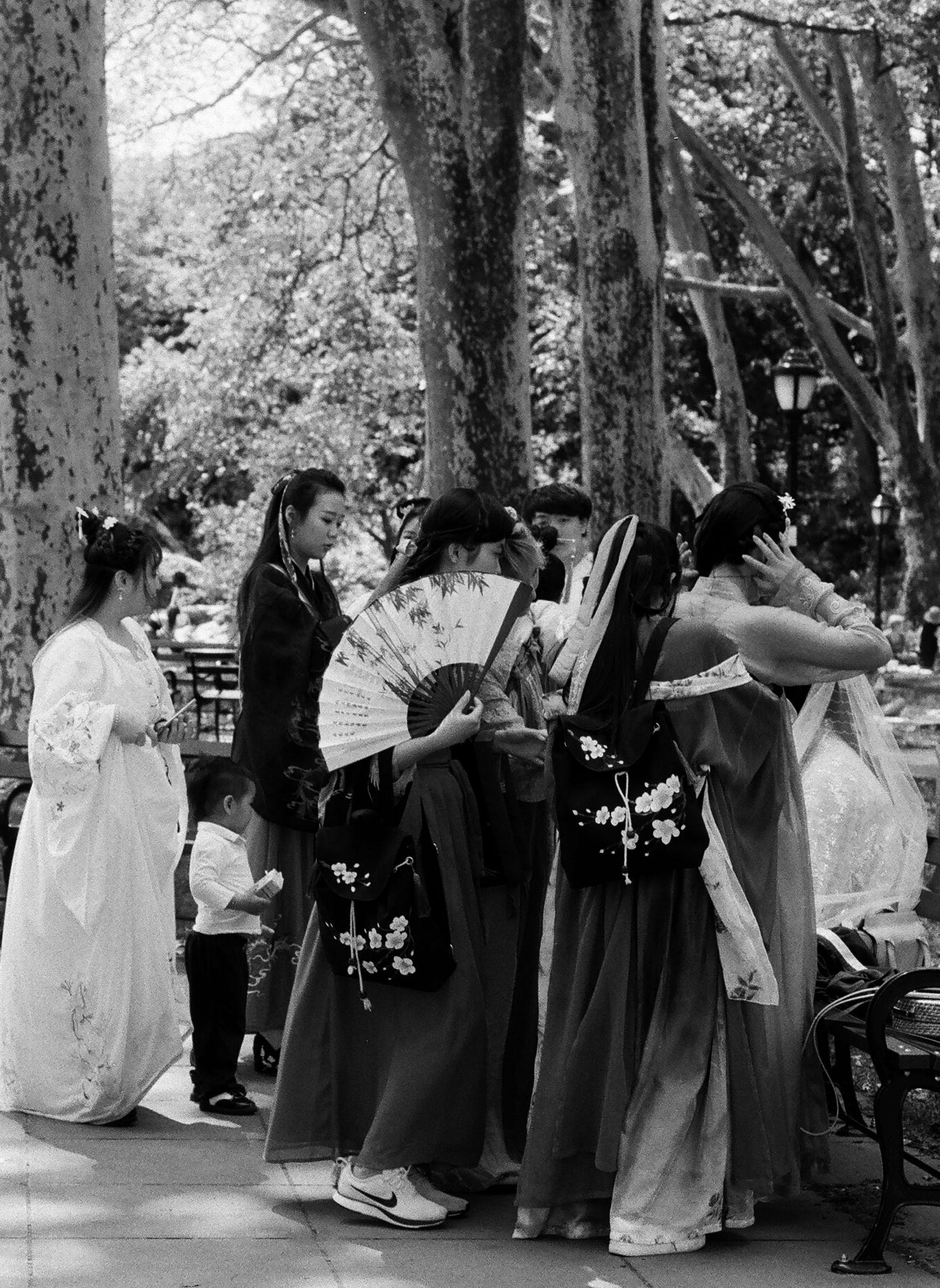A while back I declared my intentions to riff on this newsletter issue, A Few of My Favorite Lies, by my friend, John. He’s got some books you can pre-order! Subdivision, a novel, and Let Me Think, a short story collection, both coming in April.
When I first thought about it I was stuck on the discussion of the ethics of street photography, but my own conception of ethics around street photography have to do with consent rather than authenticity, which is the argument my friend was having with the Internet.
We are so far away from nearly anything’s “origins,” but we live in an age where a daily scroll through social media shows us how unoriginal most people and things are, it’s no wonder people crave a sense of authenticity, no matter how dubious I find that concept. The people my friend was arguing with took the stance that authentic street photography is both unstaged and uncropped. I’ll come back to that.
What do people mean when they say something is authentic? If we take the example of instagram, you see how much people want a sense of authenticity when they add #nofilter to their phone photo of a sunset. Perhaps to a non-photographer there is this sense of an original, unmediated photograph, but from proprietary film chemistries to digital cameras with their internal calibrations, every photograph has a filter. Some are more neutral and closer to what the average person sees with their own eyes, but that’s still a choice that was made with chemicals or sensors. Aside from this desire for a mythical photographic urtext, there’s also this need to appear effortless. If you take an “authentic” photograph that is neither staged, nor cropped, that means you are blessed with impeccable timing, and a discerning eye.
But what do we mean when we say something is inauthentic? Inauthenticity usually offends our sense of taste. If earlier photography had access to more saturated colors would we still claim that sepia tones and black and white are more authentic? People don’t actually look like that, but in a lot of ways we’ve been trained to find black and white more authoritative, more artful, more tasteful. I myself have this bias when it comes to portraiture, and you can make arguments about how it distills shapes and shadows to their essence, and the monochrome color palette gives better contrast, making portraits more striking, but I have to recognize that it’s a personal preference built upon received cultural ideas.
What I want from fiction and street photography is not authenticity but evocation.
Coming back to the unstaged and the uncropped, what this argument is really about is editing. My friend was being provocative when he said all photographs are lies (this argument falls apart if you take into account the very serious ethical concerns of documentary photography and photojournalism) but I’m a fiction writer for a reason—I like the freedom and latitude fiction gives me. I don’t buy into this idea that everything is fake, or that everything is a lie, so nothing matters. When I write realistic fiction I don’t think of the artifice as lies but rather as evocations and interpretations of experience that are closer to memory than to objective transcripts of actions. (Is such a transcript even possible?) And when you’re writing fiction or making non-documentary photography isn’t the goal to make the best version rather than merely adhering to authenticity? That’s where editing comes in. Editing is also discernment, but it’s not spontaneous the way an uncropped and unstaged street photography photo might be. You might ask yourself what the limit is between the authenticity people desire and acceptable manipulation (another way to say editing). How much editing or manipulation you tolerate is a matter of personal preference but I think it has to do with avoiding cliche and satisfying an audience without pandering to them, and leaving room for surprise.
Here is a photograph that evokes how editing feels to me. I know what I want to show you but I have to keep editing until it’s clear and if I can’t, it’s a failure. (This is a fail since I cannot bring these cats into focus.)
Here is a cropped photograph of a group of women who gathered in Prospect Park to dress up in “authentic” Chinese dress, what’s called Hanfu. (I asked!) To an observer outside the Chinese diaspora this might seem like innocent, apolitical fun, but it’s actually part of a strain of often reactionary nationalism. It’s not an accident that pre-Qing Dynasty styles are worn because the Qing Dynasty was comprised of “outsiders”. With what’s happening in China regarding Muslim concentration camps in Xinjiang and the suppression of Uighur culture, this sort of thing seems much less innocent. I’m not saying any of this was something these girls thought consciously, but these are the ideas underneath the cosplay. It’s similar to American Civil War re-enactors who play Confederate soldiers. It’s a choice.
Just a note: I am scaling back to making this a once a week newsletter. When I have recommendations I will tack those onto the end of my Wednesday missives. One of my goals this year is to complete a draft of a new novel and I need all the time I can get. Wish me luck!
Until next time…
Adalena
I love to receive comments and questions about photography and cameras!
My email: adalenakavanagh@gmail.com
Instagram: @mamiyaroid (instant/film) @5redpandas (personal)
Twitter: @adalenakavanagh
Also, if you’re thinking of buying Polaroid film for the first time, here is my referral code, which gets you 10% off, and I get some reward points.
Original photography prints: adalenakavanagh.bigcartel.com (I change out the shop every month of so. If you see something you like, let me know, I’m happy to make you a print.)
Disclosure: I am an affiliate of Bookshop.org and I will earn a commission if you click through and make a purchase.
-Adalena Kavanagh





